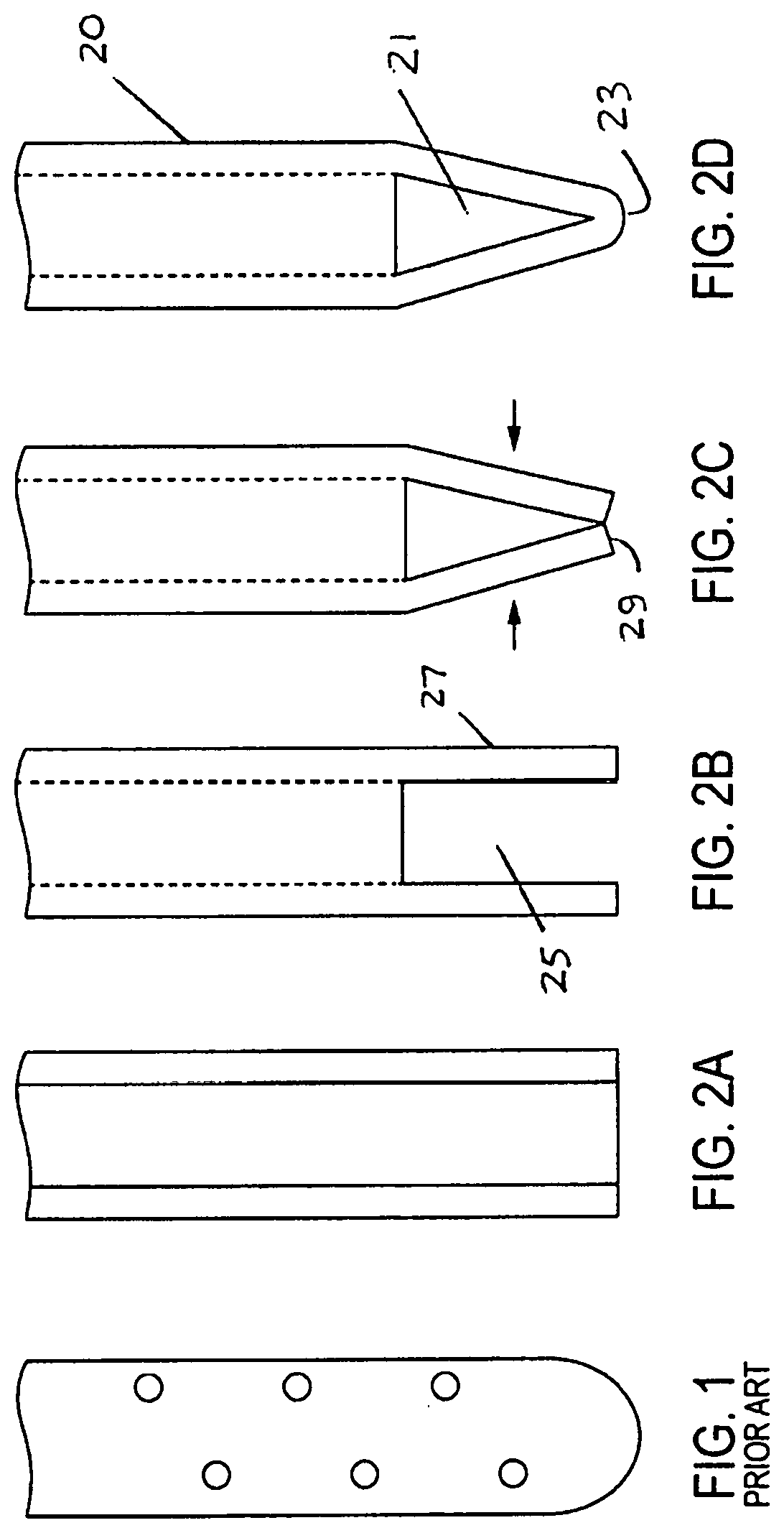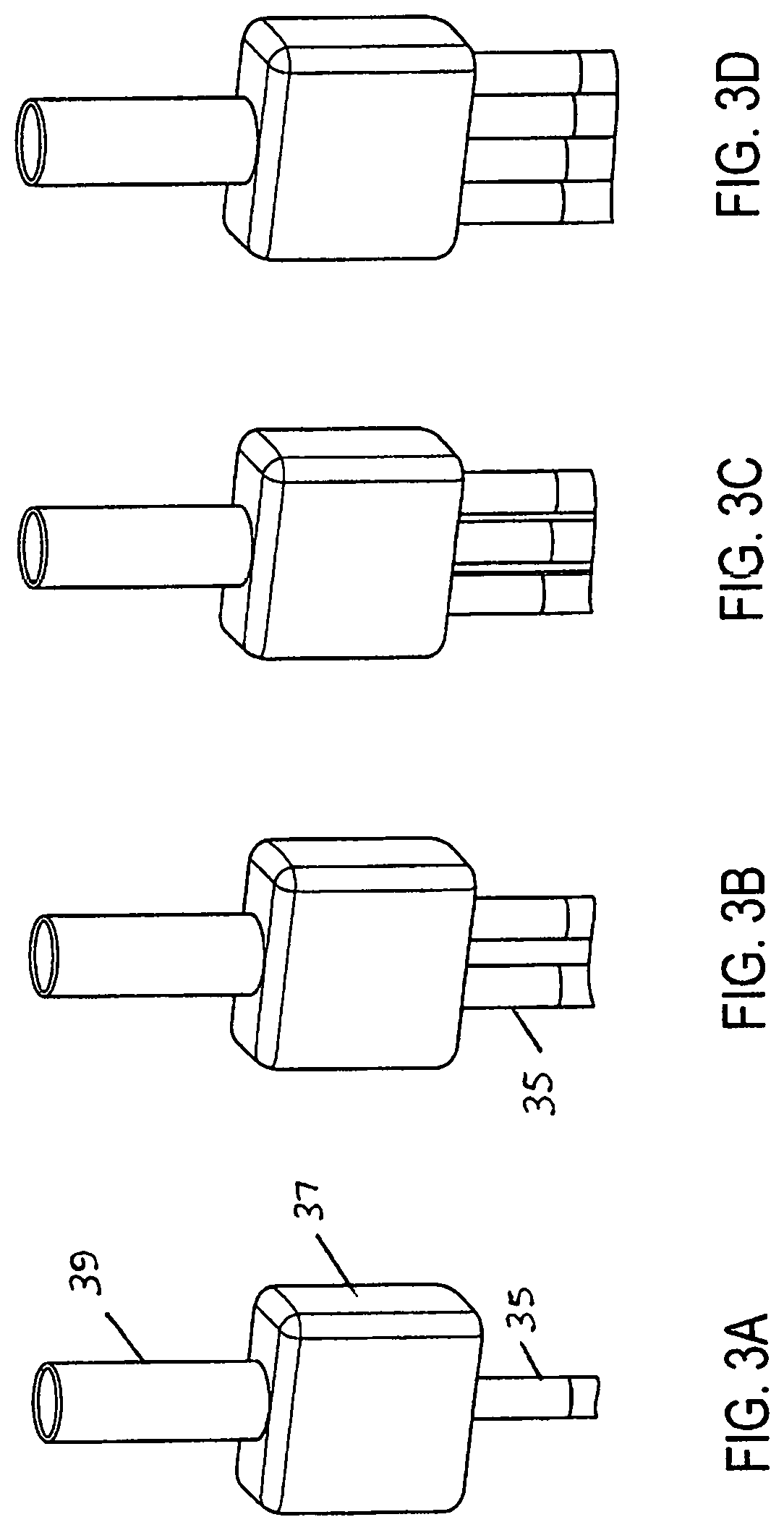Multi-cannula negative pressure irrigation system
a negative pressure irrigation and cannula technology, applied in the field of endodontic instruments, can solve the problems of frequent clogging of the ports, severe limitations of clinical use of multi-canal irrigation systems, and the time required by the clinician to use the system in multi-canal irrigation, and achieve the effect of being the least expensiv
- Summary
- Abstract
- Description
- Claims
- Application Information
AI Technical Summary
Benefits of technology
Problems solved by technology
Method used
Image
Examples
Embodiment Construction
[0043]Referring to FIGS. 2A-D, a preferred embodiment of a negative pressure irrigation (“NPI”) system 10 includes a NPI needle or cannula 20 with two suction inlet ports 21 at its tip end 23. The ports 21 are preferably non-circular in shape. Unlike the prior art, the ports 21 are the only ports within the first 1 mm from the tip end 23 and, preferably, are sized in a range of greater than 0.1 mm and less than an internal diameter of the needle 20.
[0044]The inlet ports 21 of the needle 20 are preferably made by cutting a slot 25 in the tip end 23 of a needle material such as stainless steel or its equivalent; bending the remaining opposing sidewall portions 27 until their respective ends 29 touch; and joining, welding, or bonding together the now-touching ends 29 together. This arrangement provides the needle 20 with a maximum size of inlet ports 21 so the port 21, as well as the needle 20, is less likely to clog with pulp remnants and cut dentin debris. The closed tip end 23 preve...
PUM
 Login to View More
Login to View More Abstract
Description
Claims
Application Information
 Login to View More
Login to View More - R&D
- Intellectual Property
- Life Sciences
- Materials
- Tech Scout
- Unparalleled Data Quality
- Higher Quality Content
- 60% Fewer Hallucinations
Browse by: Latest US Patents, China's latest patents, Technical Efficacy Thesaurus, Application Domain, Technology Topic, Popular Technical Reports.
© 2025 PatSnap. All rights reserved.Legal|Privacy policy|Modern Slavery Act Transparency Statement|Sitemap|About US| Contact US: help@patsnap.com



